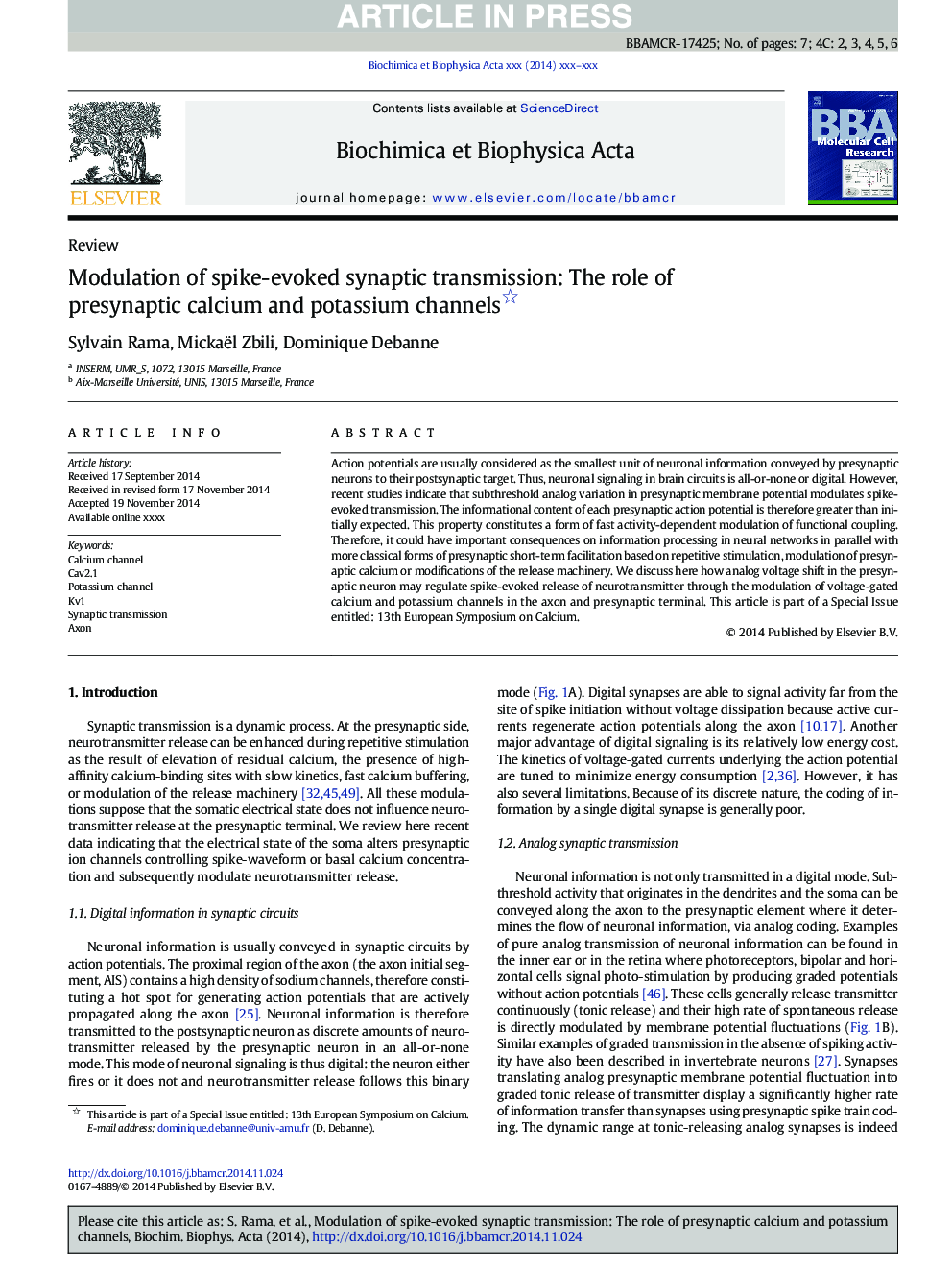| Article ID | Journal | Published Year | Pages | File Type |
|---|---|---|---|---|
| 10801879 | Biochimica et Biophysica Acta (BBA) - Molecular Cell Research | 2015 | 7 Pages |
Abstract
Action potentials are usually considered as the smallest unit of neuronal information conveyed by presynaptic neurons to their postsynaptic target. Thus, neuronal signaling in brain circuits is all-or-none or digital. However, recent studies indicate that subthreshold analog variation in presynaptic membrane potential modulates spike-evoked transmission. The informational content of each presynaptic action potential is therefore greater than initially expected. This property constitutes a form of fast activity-dependent modulation of functional coupling. Therefore, it could have important consequences on information processing in neural networks in parallel with more classical forms of presynaptic short-term facilitation based on repetitive stimulation, modulation of presynaptic calcium or modifications of the release machinery. We discuss here how analog voltage shift in the presynaptic neuron may regulate spike-evoked release of neurotransmitter through the modulation of voltage-gated calcium and potassium channels in the axon and presynaptic terminal. This article is part of a Special Issue entitled: 13th European Symposium on Calcium.
Related Topics
Life Sciences
Biochemistry, Genetics and Molecular Biology
Biochemistry
Authors
Sylvain Rama, Mickaël Zbili, Dominique Debanne,
